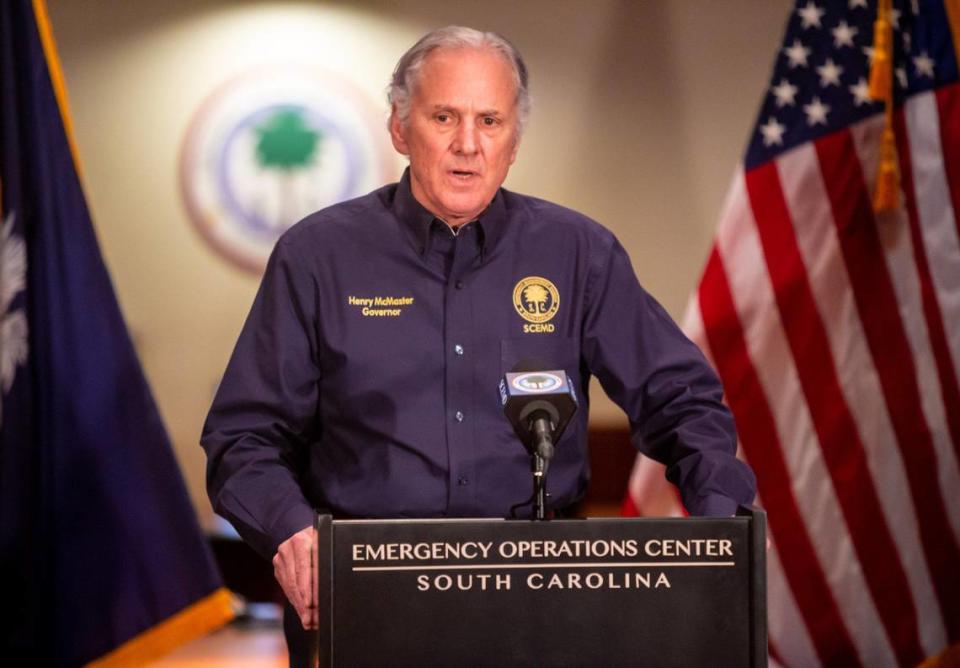How NC Gov. Roy Cooper’s COVID-19 response compares to other Southeast governors
The nation’s response to the spread of coronavirus has largely left decisions to each state’s leaders about closing restaurants and schools, ordering people to stay home and issuing other restrictions on gatherings to maintain social distancing.
Each state has responded differently as the pressure mounts for them to “flatten the curve” and limit the rise of cases and deaths.
North Carolina Gov. Roy Cooper, a Democrat, closed schools statewide first until March 27, then with a new order extending it to May 15.
However in neighboring Virginia, the governor closed the schools for the rest of the school year.
Cooper said he’s not yet ready to give up on students being able to return to school.
Cooper limited restaurants and bars to take-out and delivery only, and closed down gyms, barbershops and other businesses. Finally, he issued an order for people to stay at home starting March 30, with exceptions for many “essential” workplaces.
North Carolina Republicans for the most part have been supportive of Cooper’s decisions in the wake of rising cases of illness and death due to COVID-19.
That’s a big change from a normal political year, considering last year’s budget still hasn’t become law because of a stalemate between Cooper and the Republican-controlled legislature.
But these are different times.
Within minutes of Cooper’s order to stay at home, U.S. Sen. Thom Tillis, a Republican, issued a statement saying he supported the executive order.
Cooper’s directive is looser than some local and state ones, allowing businesses not on the “essential” list to stay open if they follow social distancing practices that call for people to stay 6 feet apart. Republicans — as well as Democrats — have aired concerns about the economic impact of closing businesses during stay at home orders. Tillis touted Cooper’s flexibility.
“I’m glad this order allows essential industries to continue their important work while also providing flexibility to North Carolina businesses that are able to practice social distancing and maintain a safe and healthy work environment to protect their employees and the general public,” Tillis said.
Senate leader Phil Berger told Spectrum News this week that Cooper’s statewide stay at home order was a “measured and reasonable response” given available data about coronavirus.
There are exceptions to the bipartisan support. When asked via email for a concurrence vote on Cooper’s order closing restaurants, a majority of the Council of State — made up of North Carolina’s 10 elected state executives — said no, according to Republican Lt. Gov. Dan Forest.
Forest criticized Cooper for going ahead without the majority-Republican council’s approval. He later clarified that he took issue with the process of the decision, not closing restaurant dine-in service for safety. The News & Observer has asked Cooper’s office for records of the emails and vote.
As of Thursday, the North Carolina Department of Health and Human Services reported more than 1,800 cases and 16 deaths. More than 28,000 people have been tested.
Here’s how other governors in nearby states are handling the crisis and how many cases and deaths those states have:
South Carolina
South Carolina passed 1,000 cases this week, and 22 people have died from it, according to the South Carolina Department of Health and Environmental Control.
South Carolina’s Republican Gov. Henry McMaster limited what businesses can stay open this week.
However, McMaster has not ordered a statewide stay at home order. Some cities have, including Columbia and Charleston.

Georgia
The Georgia Department of Health reports as of Wednesday that 139 people have died, and there are about 4,600 cases of COVID-19, a jump of more than 500 cases since its previous day’s update. More than 20,000 people have been tested.
Georgia’s Republican Gov. Brian Kemp initially closed schools until April 24 and banned gatherings of more than 10 people unless they can use social distancing. But he hadn’t issued a stay-at-home order, saying he has to weigh it against economic impact, the Macon Telegraph reported.
On Thursday, Kemp announced that he would issue a stay at home order, but it wouldn’t go into effect until Apirl 13. He also ordered schools to close for the remainder of the year.
Florida
In Florida, Republican Gov. Ron DeSantis resisted calls to issue a statewide stay-at-home order, leaving beaches open for spring breakers unless the local governments closed them. He also kept a Miami Herald reporter out of a media briefing after she and others had requested to have social distancing at the briefings.
On Wednesday, DeSantis relented and issued a statewide stay-at-home order for 30 days that would go into effect on Thursday.
The Florida Department of Health reports there are about 7,000 cases in the state and 87 deaths. Its website does not track numbers of tests overall, just those that were positive. Most were done by private labs.
Virginia
In Virginia, Democratic Gov. Ralph Northam closed schools for the remainder of the school year and issued a stay at home order that lasts until June 10. That didn’t sit well with Senate Republicans, who have written Northam public letters objecting to the length of the order.
The Virginia Department of Health reports almost 1,500 cases of COVID-19, with 34 deaths. Around 15,000 people have been tested there.
Maryland
In Maryland, Republican Gov. Larry Hogan ordered residents to stay home starting March 30, the same day that North Carolina’s went into effect. Hogan’s directive is similar to Cooper’s with the usual exceptions for food, health and caring for family and pets. The Maryland Department of Health reports almost 2,000 cases of COVID-19 as of Wednesday afternoon and 31 deaths. It has tested more than 17,000 people.
Listen to our daily briefing:
Here's how to listen to our Daily Briefing on your favorite smart speakers and podcast playlists.

